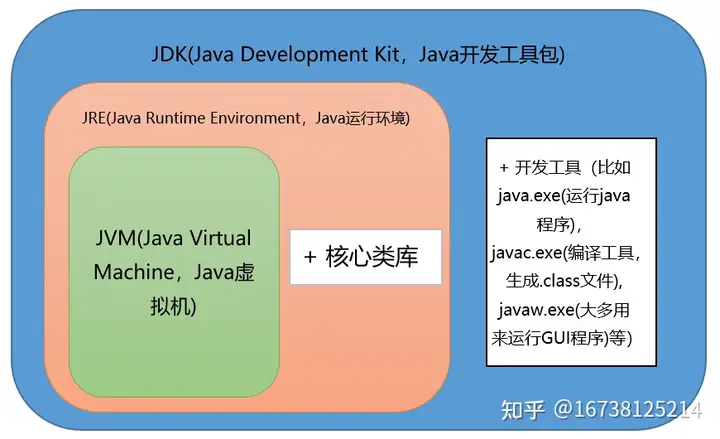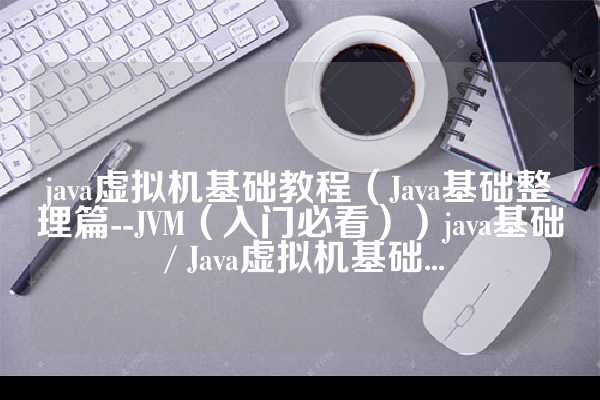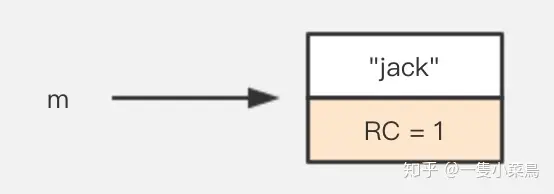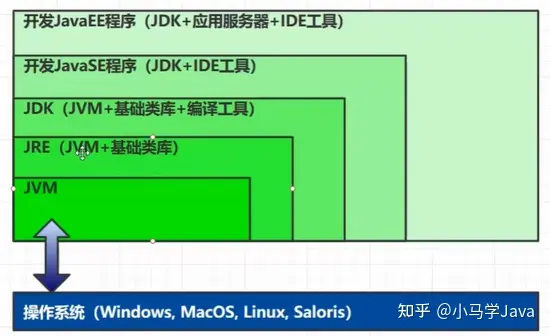基本概念Wiki 中是这样描述内省的:在计算机科学中,内省是指计算机程序在运行时(Run time)检查对象(Object)类型的一种能力,通常也可以称作运行时类型检查这个描述非常宽泛,但有三个关键词:。
运行时对象类型Java 官方对 Java Beans 内省的定义:At runtime and in the builder environment we need to be able to figure out which properties, events, and methods a Java Bean supports. We call this process introspection.

从 Java Bean 的角度来看,这里的对象就是 Bean 对象,主要关注点是属性、方法和事件等,也就是说在运行时可以获取相应的信息进行一些处理,这就是 Java Beans 的内省机制与反射的区别Java Beans 内省其实就是对反射的一种封装,这个从源码中或者官方文档中都能看到:
By default we will use a low level reflection mechanism to study the methods supported by a target bean and then apply simple design patterns to deduce from those methods what properties, events, and public methods are supported.
Java Beans 内省机制核心类库Java Beans 内省机制的核心类是 Introspector:* The Introspector classprovidesastandardwayfortools
tolearnabout * the properties, events, and methods supported by a target Java Bean.操作范围主要包括但不局限于 Java Beans 的属性,事件和方法,具体是基于以下几个类实现:
BeanInfoJava Bean 信息类PropertyDescriptor属性描述类MethodDescriptor方法描述类EventSetDescriptor事件描述集合先看一个示例:定义一个 Java Bean:
publicclassUser {private String username; private Integer age; // getter/setter// toString }
测试代码@Testpublic void test1() throws IntrospectionException { //获取 User Bean 信息 BeanInfo userBeanInfo = Introspector.getBeanInfo(User
.class);//属性描述 PropertyDescriptor[] propertyDescriptors = userBeanInfo.getPropertyDescriptors(); System.
out.println("属性描述:"); Stream.of(propertyDescriptors).forEach(System.out::println); //方法描述 System.
out.println("方法描述:"); MethodDescriptor[] methodDescriptors = userBeanInfo.getMethodDescriptors(); Stream.of(methodDescriptors).forEach(System.
out::println); //事件描述 System.out.println("事件描述:"); EventSetDescriptor[] eventSetDescriptors = userBeanInfo.getEventSetDescriptors(); Stream.of(eventSetDescriptors).forEach(System.
out::println); } 输出结果:属性描述: java.beans.PropertyDescriptor[name=age; propertyType=classjava.lang.Integer
; readMethod=public java.lang.Integer introspector.bean.User.getAge(); writeMethod=publicvoid introspector.bean.User.setAge(java.lang.Integer)] java.beans.PropertyDescriptor[name=
class; propertyType=classjava.lang.Class; readMethod=publicfinalnative java.lang.Class java.lang.Object.getClass()] java.beans.PropertyDescriptor[name=username; propertyType=
classjava.lang.String; readMethod=public java.lang.String introspector.bean.User.getUsername(); writeMethod=
publicvoid introspector.bean.User.setUsername(java.lang.String)] 方法描述: java.beans.MethodDescriptor[name=getClass; method=
publicfinalnative java.lang.Class java.lang.Object.getClass()] java.beans.MethodDescriptor[name=setAge; method=
publicvoid introspector.bean.User.setAge(java.lang.Integer)] java.beans.MethodDescriptor[name=getAge; method=
public java.lang.Integer introspector.bean.User.getAge()] java.beans.MethodDescriptor[name=wait; method=
publicfinalvoid java.lang.Object.wait(long,int) throws java.lang.InterruptedException] java.beans.MethodDescriptor[name=notifyAll; method=
publicfinalnativevoid java.lang.Object.notifyAll()] java.beans.MethodDescriptor[name=notify; method=public
finalnativevoid java.lang.Object.notify()] java.beans.MethodDescriptor[name=getUsername; method=public
java.lang.String introspector.bean.User.getUsername()] java.beans.MethodDescriptor[name=wait; method=
publicfinalvoid java.lang.Object.wait() throws java.lang.InterruptedException] java.beans.MethodDescriptor[name=hashCode; method=
publicnativeint java.lang.Object.hashCode()] java.beans.MethodDescriptor[name=setUsername; method=public
void introspector.bean.User.setUsername(java.lang.String)] java.beans.MethodDescriptor[name=wait; method=
publicfinalnativevoid java.lang.Object.wait(long) throws java.lang.InterruptedException] java.beans.MethodDescriptor[name=equals; method=
publicboolean java.lang.Object.equals(java.lang.Object)] java.beans.MethodDescriptor[name=toString; method=
public java.lang.String introspector.bean.User.toString()] 事件描述: 可以看出通过内省机制可以获取 Java Bean 的属性、方法描述,这里事件描述是空的(关于事件相关会在后面介绍)。
由于 Java 类都会继承 Object 类,可以看到这里将 Object 类相关的属性和方法描述也输出了,如果想将某个类的描述信息排除可以使用 java.beans.Introspector#getBeanInfo(java.lang.Class, java.lang.Class)
这个方法属性处理配置绑定通过 PropertyDescriptor 可以基于字段名为可写属性设置值比如我们经常会使用这样的配置文件:user:username:zhangsanage:1配置文件会与对象进行数据绑定。
测试代码:@Testpublicvoidtest2()throws IntrospectionException { YamlPropertiesFactoryBean yaml = new YamlPropertiesFactoryBean(); yaml.setResources(
new ClassPathResource("application.yml")); String path = "user."; Properties properties = yaml.getObject(); System.out.println(properties); User user =
new User(); //获取 User Bean 信息,排除 Object BeanInfo userBeanInfo = Introspector.getBeanInfo(User
.class, Object.class); //属性描述 PropertyDescriptor[] propertyDescriptors = userBeanInfo.getPropertyDescriptors(); Stream.of(propertyDescriptors).forEach(propertyDescriptor -> {
//获取属性名称 String property = propertyDescriptor.getName(); try { propertyDescriptor.getWriteMethod().invoke(user,properties.get(path+property)); }
catch (IllegalAccessException | InvocationTargetException ignored) { } }); System.out.println(user); }
输出结果:User{username=zhangsan, age=1}在 Spring 中的使用在传统的 Spring 开发中我们需要在 web.xml 中指定一些配置参数,比如:
>apporg.springframework.web.servlet.DispatcherServlet
>contextConfigLocation
>1这里有一个 contextConfigLocation 参数,这个参数最终是与 FrameworkServlet 类中的一个属性进行绑定:public
abstractclassFrameworkServletextendsHttpServletBeanimplementsApplicationContextAware{ private String contextConfigLocation; }
那么 Spring 是如何将 web.xml 中的配置项与属性进行绑定的呢,可以参数看org.springframework.web.servlet.HttpServletBean#init() 方法:
@Overridepublicfinalvoidinit()throws ServletException { // Set bean properties from init parameters.
PropertyValues pvs = new ServletConfigPropertyValues(getServletConfig(), this.requiredProperties);
if (!pvs.isEmpty()) { try { BeanWrapper bw = PropertyAccessorFactory.forBeanPropertyAccess(
this); ResourceLoader resourceLoader = new ServletContextResourceLoader(getServletContext()); bw.registerCustomEditor(Resource
.class, newResourceEditor(resourceLoader, getEnvironment())); initBeanWrapper(bw); bw.setPropertyValues(pvs,
true); } catch (BeansException ex) { if (logger.isErrorEnabled()) { logger.error(
"Failed to set bean properties on servlet " + getServletName() + "", ex); } throw ex; } }
// Let subclasses do whatever initialization they like. initServletBean(); }可以看到 Spring 是通过 BeanWrapper
完成对属性的绑定:publicinterfaceBeanWrapperextendsConfigurablePropertyAccessor{ // 获取属性描述器 PropertyDescriptor[] getPropertyDescriptors();
PropertyDescriptor getPropertyDescriptor(String var1)throws InvalidPropertyException; }而 BeanWrapper 又继承了
PropertyAccessor 接口:publicinterfacePropertyAccessor{ //读属性booleanisReadableProperty(String var1);
//写属性booleanisWritableProperty(String var1); @Nullable Class getPropertyType(String var1)
throws BeansException; @NullableTypeDescriptor getPropertyTypeDescriptor(String var1)throws BeansException
; }也就是说 Spring 中 BeanWrapper 基于 Java 的内省机制实现了对属性的赋值工作,但是 Spring 并未局限于 Java 提供的 API,而是也进行了扩展和进一步的封装,如
TypeDescriptor可以参考 org.springframework.web.servlet.HttpServletBean#init() 中 BeanWrapper 的使用来实现对 User 对象的属性赋值:
@Test publicvoidtest5(){ User user = new User(); BeanWrapper bw = PropertyAccessorFactory.forBeanPropertyAccess(user); MutablePropertyValues pvs =
new MutablePropertyValues(); pvs.add("username","zhangsan"); pvs.add("age",1); bw.setPropertyValues(pvs); System.
out.println(user); }输出结果:User{username=zhangsan, age=1} 类型转换有属性赋值,必然就会有类型转换说白了我们从配置文件读取的数据是字符串,与属性进行参数绑定的过程中势必会有类型转换,。
java.beans 中提供了相应的 API:PropertyEditor属性编辑器顶层接口PropertyEditorSupport属性编辑器实现类PropertyEditorManager属性编辑器管理器在 Spring 中提供了一个 PropertyEditorRegistrar
先看一个例子:User 类增加 Date 属性:publicclass User { privateString username; private Integer age;
privateDate createTime; // getter/setter// toString }日期转换器:/** * 日期属性编辑器 */publicclassDatPropertyEditor
extendsPropertyEditorSupport{ @OverridepublicvoidsetAsText(String text){ try { setValue((text ==
null) ? null : new SimpleDateFormat("yyyy-MM-dd").parse(text)); } catch (ParseException e) { e.printStackTrace(); } } }
在之前的例子中内省设置属性值都是直接通过 PropertyDescriptor 获取属性的写方法通过反射去赋值,而如果需要对值进行类型转换,则需要通过 PropertyEditorSupport#setAsText
调用 setValue 方法,然后 setValue 方法触发属性属性修改事件:publicclassPropertyEditorSupportimplementsPropertyEditor {
publicvoidsetValue(Object value) { this.value = value; firePropertyChange(); } }要注意这里的
value 实际上是临时存储在 PropertyEditorSupport 中,PropertyEditorSupport 则作为事件源,从而得到类型转换后的 value,再通过 PropertyDescriptor
获取属性的写方法通过反射去赋值测试代码:@Testpublicvoid test6() throws IntrospectionException, FileNotFoundException { Map<。
String,Object> properties = ImmutableMap.of("age",1,"username","zhangsan","createTime","2020-01-01"); User user =
new User(); //获取 User Bean 信息,排除 Object BeanInfo userBeanInfo = Introspector.getBeanInfo(User.class,
Object.class); //属性描述 PropertyDescriptor[] propertyDescriptors = userBeanInfo.getPropertyDescriptors(); Stream.of(propertyDescriptors).forEach(propertyDescriptor -> {
//获取属性名称String property = propertyDescriptor.getName(); //值Object value = properties.get(property);
if (Objects.equals("createTime", property)) { //设置属性编辑器 propertyDescriptor.setPropertyEditorClass(DatPropertyEditor.class);
//创建属性编辑器 PropertyEditor propertyEditor = propertyDescriptor.createPropertyEditor(user);
//添加监听器 propertyEditor.addPropertyChangeListener(evt -> { //获取转换后的valueObject
value1 = propertyEditor.getValue(); setPropertyValue(user, propertyDescriptor, value1); }); propertyEditor.setAsText(
String.valueOf(value)); return; } setPropertyValue(user, propertyDescriptor, value); }); System.out.println(user); }
/** * 设置属性值 */privatevoid setPropertyValue(User user, PropertyDescriptor propertyDescriptor, Object
value1) { try { propertyDescriptor.getWriteMethod().invoke(user, value1); } catch (IllegalAccessException | InvocationTargetException ignored) { } }
输出结果:User{username=zhangsan, age=1, createTime=2020-1-1 0:00:00} 事件监听如果将右侧看成一个 Java Bean,那么这中间势必存在一个属性变化监听。
java.beans 包中也提供了相应实现:PropertyChangeEvent属性变化事件PropertyChangeListener属性(生效)变化监听器PropertyChangeSupport属性(生效)变化监听器管理器’
VetoableChangeListener属性(否决)变化监听器VetoableChangeSupport属性(否决)变化监听器管理器PropertyChangeEvent 的构造方法:public PropertyChangeEvent(
Object source, String propertyName, Object oldValue, Object newValue) { super(source); this
.propertyName = propertyName; this.newValue = newValue; this.oldValue = oldValue; } 通过这个构造方法可以看出属性变化监听的关注点:
source事件源propertyName发生变化的属性名称oldValue旧值newValue新值示例代码:在 User 中增加属性(生效)变化监听:publicclassUser { private
String username; private Integer age; /** * 属性(生效)变化监听器管理器 */private PropertyChangeSupport propertyChangeSupport =
new PropertyChangeSupport(this); /** * 启动属性(生效)变化 * @param propertyName * @param oldValue * @param newValue */
privatevoidfirePropertyChange(String propertyName, String oldValue, String newValue) { PropertyChangeEvent
event = new PropertyChangeEvent(this, propertyName, oldValue, newValue); propertyChangeSupport.firePropertyChange(
event); } /** * 添加属性(生效)变化监听器 */publicvoidaddPropertyChangeListener(PropertyChangeListener listener
){ propertyChangeSupport.addPropertyChangeListener(listener); } /** * 删除属性(生效)变化监听器 */
publicvoidremovePropertyChangeListener(PropertyChangeListener listener){ propertyChangeSupport.removePropertyChangeListener(listener); }
/** * 获取属性(生效)变化监听器 */public PropertyChangeListener[] getPropertyChangeListeners() {
return propertyChangeSupport.getPropertyChangeListeners(); } publicvoidsetUsername(String username
) { String oldValue = this.username; this.username = username; firePropertyChange(
"username", oldValue, username); } // getter/setter// toString } 测试代码:@Testpublicvoidtest3()
{ User user = new User(); user.setAge(1); user.setUsername("zhangsan"); user.addPropertyChangeListener(System.out::println); user.setUsername(
"lisi"); user.setUsername("wangwu"); } 输出结果:java.beans.PropertyChangeEvent[propertyName=name; oldValue=zhangsan; newValue=lisi; propagationId=null; source=User{username=
lisi, age=1}]java.beans.PropertyChangeEvent[propertyName=name; oldValue=lisi; newValue=wangwu; propagationId=null; source=User{username=
wangwu, age=1}]可以看到在添加了监听器后,当 username 属性发生变化的时候会出发监听事件再看看另外一种监听器 VetoableChangeListener在 User 中添加监听器:。
/** * 属性(否决)变化监听器 */private VetoableChangeSupport vetoableChangeSupport = new VetoableChangeSupport(
this); /** * 启动属性(否决)变化 * @param propertyName * @param oldValue * @param newValue */privatevoid
fireVetoableChange(String propertyName, String oldValue, String newValue) throws PropertyVetoException
{ PropertyChangeEvent event = new PropertyChangeEvent(this, propertyName, oldValue, newValue); vetoableChangeSupport.fireVetoableChange(
event); } /** * 添加属性(否决)变化监听器 */publicvoidaddVetoableChangeListener(VetoableChangeListener listener
){ vetoableChangeSupport.addVetoableChangeListener(listener); } /** * 删除属性(否决)变化监听器 */publicvoid
removeVetoableChangeListener(VetoableChangeListener listener){ vetoableChangeSupport.removeVetoableChangeListener(listener); }
publicvoidsetUsername(String username) throws PropertyVetoException { String oldValue = this.username; fireVetoableChange(
"username",oldValue,username); this.username = username; firePropertyChange("username", oldValue, username); }
测试代码:@Testpublicvoidtest3()throws PropertyVetoException { User user = new User(); user.setAge(
1); user.addVetoableChangeListener(evt -> { System.out.println(evt.getNewValue()+",,"+evt.getOldValue());
if (Objects.equals(evt.getNewValue(), evt.getOldValue())) { thrownew PropertyVetoException(
"当前属性值未发生任何变化", evt); } }); user.addPropertyChangeListener(System.out::println); user.setUsername(
"lisi"); user.setUsername("zhangsan"); user.setUsername("zhangsan"); } 运行时发现一直无法抛出异常查看源码发现 PropertyChangeSupport
和 VetoableChangeSupport 当新旧值相等时不会触发监听,于是修改测试代码:@Testpublicvoidtest3()throws PropertyVetoException { User user =
new User(); user.setAge(1); user.addVetoableChangeListener(evt -> { System.out.println(evt.getNewValue()+
",,"+evt.getOldValue()); if (Objects.isNull(evt.getNewValue())) { thrownew PropertyVetoException(
"username 不能为null", evt); } }); user.addPropertyChangeListener(System.out::println); user.setUsername(
"lisi"); user.setUsername(null); } 运行结果:lisi,,null java.beans.PropertyChangeEvent[propertyName=username; oldValue=
null; newValue=lisi; propagationId=null; source=User{username=lisi, age=1}] null,,lisi java.beans.PropertyVetoException: username 不能为
null at introspector.test.IntrospectorTest.lambda$test3$1(IntrospectorTest.java:78) at java.beans.VetoableChangeSupport.fireVetoableChange(VetoableChangeSupport.java:
375) 可以发现当符合“否决”属性变化的条件时,会抛出 PropertyVetoException 异常阻断属性的变化在之前的示例中 userBeanInfo 输出的 EventSetDescriptor。
为空,这是因为并未到 User 类中增加事件现在再测试一下获取 EventSetDescriptor:@Testpublicvoidtest1()throws IntrospectionException 。
{ BeanInfo userBeanInfo = Introspector.getBeanInfo(User.class, Object.class); EventSetDescriptor[] eventSetDescriptors = userBeanInfo.getEventSetDescriptors(); Stream.of(eventSetDescriptors).forEach(System.out::println); }
输出结果:java.beans.EventSetDescriptor[name=propertyChange; inDefaultEventSet; listenerType=interfacejava
.beans.PropertyChangeListener; getListenerMethod=public java.beans.PropertyChangeListener[] introspector.bean.User.getPropertyChangeListeners(); addListenerMethod=
publicvoid introspector.bean.User.addPropertyChangeListener(java.beans.PropertyChangeListener); removeListenerMethod=
publicvoid introspector.bean.User.removePropertyChangeListener(java.beans.PropertyChangeListener)] java.beans.EventSetDescriptor[name=vetoableChange; inDefaultEventSet; listenerType=
interfacejava.beans.VetoableChangeListener; addListenerMethod=publicvoid introspector.bean.User.addVetoableChangeListener(java.beans.VetoableChangeListener); removeListenerMethod=
publicvoid introspector.bean.User.removeVetoableChangeListener(java.beans.VetoableChangeListener)] 其他
在 Java 生态飞速发展的今天,很多底层技术细节都被高级框架所屏蔽,而 Java Beans 就是其中一种也许平时根本就用不到,但是其代码设计和思想理念不应该被忽视Dubbo 2.7 之后提出了“服务自省”的概念,其灵感就来源于 Java Beans 内省机制。
引用:https://xiaomi-info.github.io/2020/03/16/java-beans-introspection/如有侵权联系删除。







发表评论:
◎欢迎参与讨论,请在这里发表您的看法、交流您的观点。